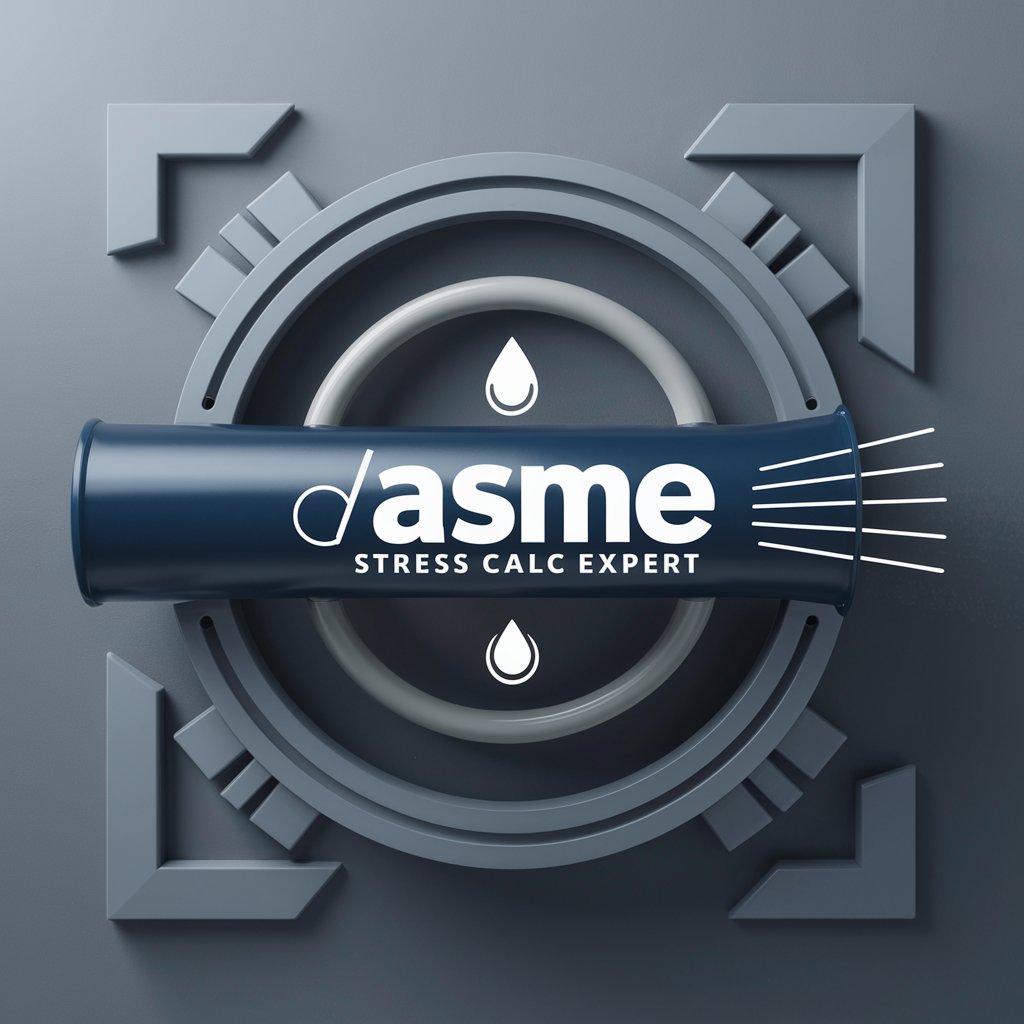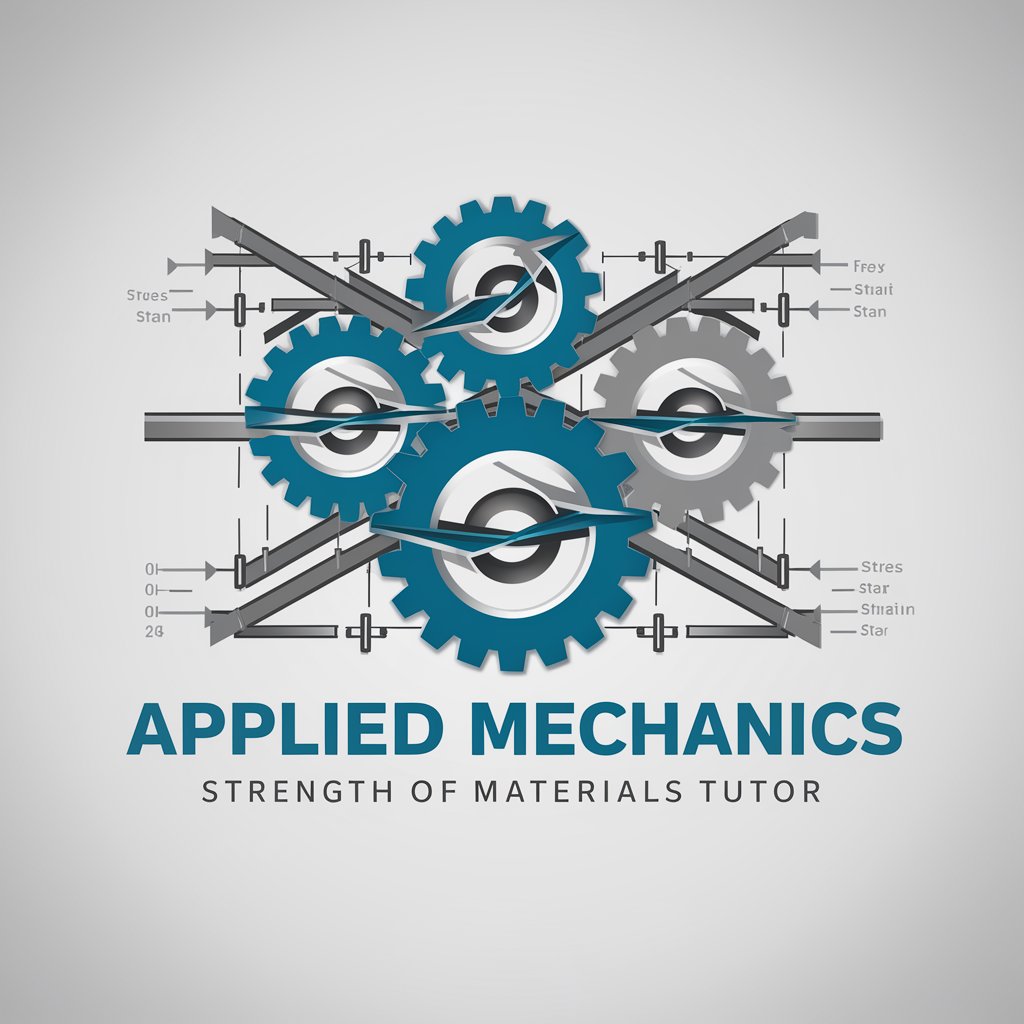
ASME Stress Calc Expert - ASME Standard Compliance

Welcome! Let's tackle your pipe and tubing stress calculations together.
AI-Powered ASME Standard Stress Analysis
Can you help me calculate the stress in a pipe under high pressure using ASME standards?
What are the key considerations for tubing stress analysis in high-temperature environments?
How do I determine the maximum allowable stress for a given material according to ASME guidelines?
Could you guide me through the process of evaluating thermal expansion effects on pipeline stress?
Get Embed Code
Overview of ASME Stress Calc Expert
ASME Stress Calc Expert is a specialized tool designed to assist professionals in the oil and gas industry with pipe and tubing stress calculations according to the ASME (American Society of Mechanical Engineers) standards. This tool is tailored to ensure compliance with these standards, focusing on the unique challenges presented by high-pressure systems, temperature variations, and the selection of appropriate materials. The expert system provides detailed guidance for conducting stress analyses, which is critical for the design, assessment, and optimization of piping systems to ensure safety, reliability, and regulatory compliance. An example scenario where ASME Stress Calc Expert proves invaluable is in the design phase of a new offshore oil rig, where accurate stress calculations are paramount to prevent catastrophic failures under extreme conditions. Powered by ChatGPT-4o。

Core Functions of ASME Stress Calc Expert
Stress Analysis
Example
Calculating the stress on piping systems under various loads, including internal pressure, weight, and thermal expansion.
Scenario
In the construction of a high-pressure gas transmission pipeline, ASME Stress Calc Expert is used to analyze and optimize the pipeline's design to withstand operational pressures and temperature changes without failing.
Material Selection
Example
Recommending suitable materials for pipes and tubing based on operating conditions and ASME standards.
Scenario
Selecting the appropriate material for sour service conditions in an oil field, where the presence of hydrogen sulfide requires materials with high resistance to sulfide stress cracking.
Compliance Verification
Example
Ensuring that piping designs meet ASME B31.3 Process Piping standards, including necessary safety margins.
Scenario
During the audit of a chemical plant, ASME Stress Calc Expert is utilized to verify that the existing piping system complies with ASME B31.3 standards, identifying non-compliance issues and recommending modifications.
Fatigue Analysis
Example
Assessing the fatigue life of piping components subjected to cyclic loading conditions.
Scenario
Analyzing the impact of cyclic temperature and pressure changes on the fatigue life of steam lines in a geothermal power plant to predict and extend the service life of these components.
Target Users of ASME Stress Calc Expert
Piping Engineers
Professionals responsible for the design, installation, and maintenance of piping systems. They benefit from using ASME Stress Calc Expert by ensuring that their designs meet the stringent requirements of ASME standards, thereby enhancing safety and reliability.
Project Managers
Individuals overseeing oil and gas projects who require accurate stress calculations to make informed decisions on material selection, design modifications, and compliance issues, ensuring project timelines and budgets are met while maintaining safety standards.
Compliance Auditors
Experts tasked with ensuring that piping systems adhere to regulatory and industry standards. ASME Stress Calc Expert assists them in identifying non-compliance issues and verifying that corrective actions align with ASME guidelines.
Research and Development Teams
Groups focused on developing new materials and technologies for the oil and gas industry. They use ASME Stress Calc Expert to assess the performance and suitability of new materials under simulated operational conditions, accelerating innovation while ensuring compliance with established standards.

Using ASME Stress Calc Expert: Step-by-Step Guide
Start Your Free Trial
Begin by visiting yeschat.ai to access a free trial of ASME Stress Calc Expert, no login or ChatGPT Plus subscription required.
Understand ASME Standards
Familiarize yourself with relevant ASME standards related to pipe and tubing stress calculations, especially for oil and gas applications.
Prepare Your Data
Compile necessary data including material properties, operating temperatures, pressures, and environmental conditions.
Input Parameters
Input the collected data into ASME Stress Calc Expert, ensuring accuracy for precise calculations.
Analyze and Interpret
Review the calculated stress results, compare them against ASME standards, and apply professional engineering judgment for final decision-making.
Try other advanced and practical GPTs
DevOps Expert
AI-powered DevOps Efficiency

Yii2 Expert
Empowering PHP Development with AI

エルフさんとお会話しませんか?
Engage with an elf on RPGs, magic, and nature.

Thumbnail Creator AI
Create engaging thumbnails effortlessly

Instagram expert
Elevate your Instagram presence with AI-powered insights.

EchoCraft - Instagram Content Calendar Planner
Optimize your Instagram with AI-powered planning

Making Storyteller
Craft Your Story, Powered by AI

China's traditional tea-making
Discover the Art of Chinese Tea

Ethical Decision-Making
Navigate Ethics with AI-Powered Insight

Money-making
Empowering Your Financial Decisions with AI

Making SNS
Empower Your Storytelling with AI

Decision-Making Mastermind
AI-powered structured decision-making.

Frequently Asked Questions about ASME Stress Calc Expert
What standards does ASME Stress Calc Expert follow?
ASME Stress Calc Expert adheres to the latest ASME B31.3 Process Piping Code and other relevant standards for stress analysis in oil and gas pipelines.
Can this tool handle calculations at high temperatures?
Yes, it is equipped to perform stress calculations for pipelines operating at high temperatures, taking into account thermal expansion and material properties.
Is this tool suitable for educational purposes?
Absolutely. It serves as an educational resource for students and professionals to understand and apply ASME standards in stress calculations.
Does it offer guidance on material selection?
While the primary focus is on stress calculations, it provides insights into the implications of different materials under various operating conditions.
How does this tool ensure accuracy?
It integrates advanced algorithms with current industry data, offering high accuracy in compliance with ASME standards, but always recommends final verification by a qualified engineer.





